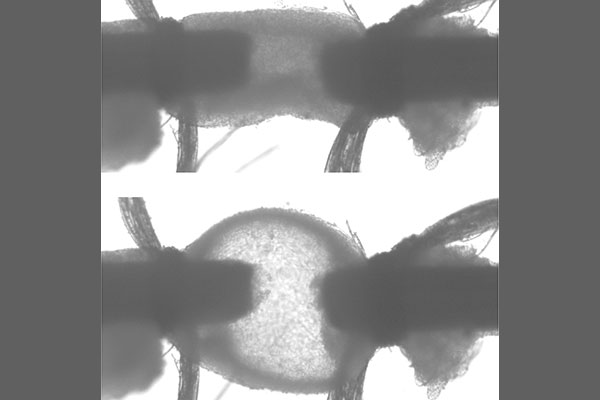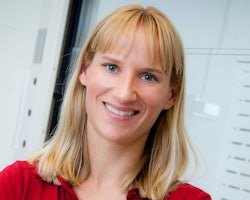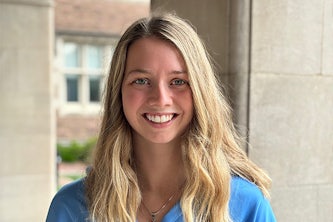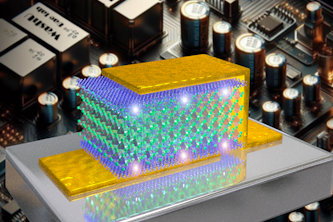Starting at the beginning
Work in Jessica Wagenseil’s lab sheds light on vital role of elastin in aorta

For researchers to study the body in a diseased state, they have to know its beginning state to determine the paths that led to disease. A team of researchers at Washington University in St. Louis has applied that idea to the aorta, the largest artery in the body, as a model to understand how it develops and how it responds to mechanical stressors.
Jessica Wagenseil, professor of mechanical engineering & materials science in the McKelvey School of Engineering, and members of her team applied various stresses and strains to newborn mouse aorta to determine its mechanical properties using specialized equipment to observe and handle the half-millimeter-diameter and 2-millimeter-long samples. They used aorta both with and without elastin, a protein that is a key component of a network of elastic fibers that allows the aorta to expand and contract that is critical for survival.
While mechanical properties of the adult mouse aorta are well-known, this painstaking and technically challenging work revealed these biaxial mechanical properties of newborn mouse aorta for the first time. Results of the mechanobiology research were recently published online in the Journal of Mechanical Behavior of Biomedical Materials.
Jungsil Kim, first author on the paper, a former postdoctoral associate in Wagenseil’s lab and now an assistant professor at Suncheon National University, applied pressure mimicking blood pressure and axial stretch to the aorta samples to test them biaxially, or by length, diameter and through the wall of the cylindrical-shaped aorta. They found that the wall of the aorta was thicker in the samples without elastin than in those containing elastin. In addition, as they stretched and pressurized the aorta, its shape changed from a cylindrical to a spherical shape, making analysis of the results more complicated.
“Using an equation that determines stored strain energy, we found that the fitted constants were reduced for the aorta without elastin,” Wagenseil said. “We think part of that is due to the mechanically-stimulated remodeling that takes place to compensate for the lack of elastin.”
The team’s work modeling the mechanical behavior of the newborn mouse aorta will benefit researchers studying elastic fiber diseases as well as those who work in tissue engineering.
Going forward, Wagenseil’s team will investigate how the aorta undergoes that remodeling by taking a closer look at the cellular-level mechanical changes, in addition to the tissue-level changes that they have already described.
Kim J, Cocciolone A, Staiculescu M, Mecham R, Wagenseil J. Passive biaxial mechanical behavior of newborn mouse aorta with and without elastin. Journal of the Mechanical Behavior of Biomedical Materials, published online Nov. 29, 2021. https://doi.org/10.1016/j.jmbbm.2021.105021
This research was supported by the National Institutes of Health (HL-115560 and HL-152420; HL-053325; and HL-105314.)




